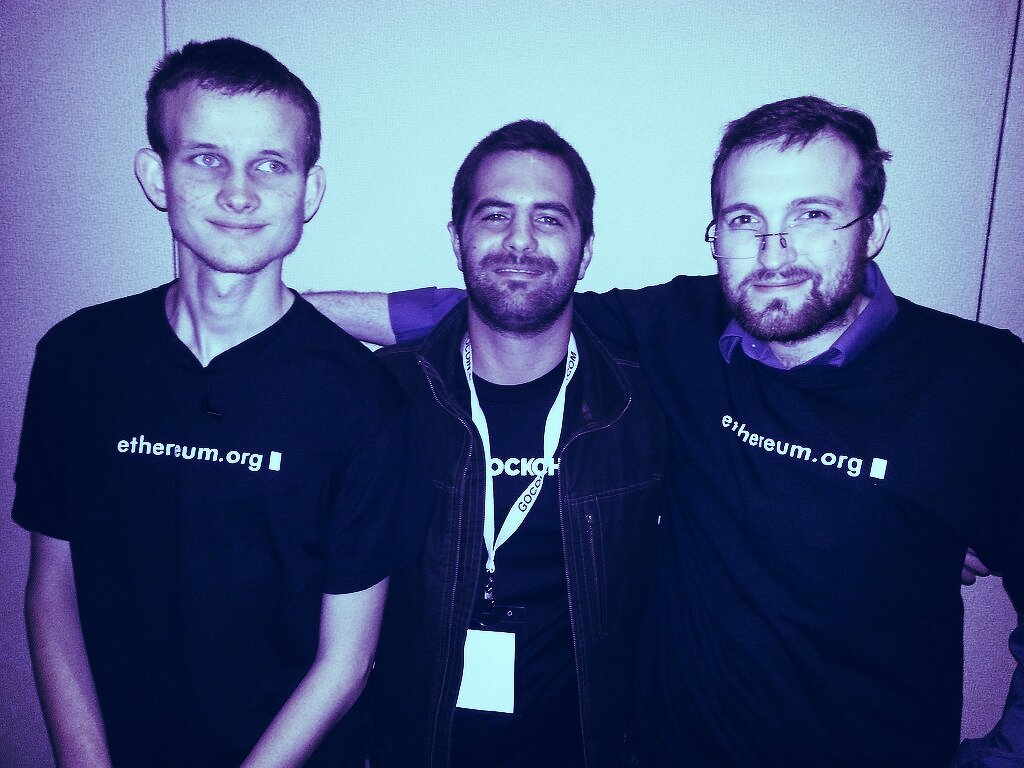
Vitalik Buterin and Charles Hoskinson make their differences in design approaches clear to everyone.
In brief
- Ethereum co-founder Vitalik Buterin prefers “heuristic arguments”—practical solutions—in blockchain design, unlike the founder of Cardano, Charles Hoskinson.
- Hoskinson, who also co-founded Ethereum, said Cardano will stick to its “evidence-based software” approach because the stakes—users’ money and privacy—are too high.
Ethereum co-founder Vitalik Buterin told podcaster Lex Friedman that “deep academic rigor is overrated,” in an apparent swipe at Cardano, the crypto project led by former Ethereum co-founder Charles Hoskinson.
Such projects “really emphasize having these big academic proofs for everything,” Buterin said on the podcast, uploaded to YouTube on Friday. By contrast, Buterin said that “Ethereum tends to be more okay with heuristic arguments, in part because it’s trying to do more faster.”
By heuristics, Buterin refers to problems solved with practical solutions rather than theoretically spotless formulae. Updates to Cardano, on the other hand, must be approved by a rigorous academic committee that peer reviews each change.
Hoskinson claims Cardano’s design improves on Ethereum’s. He said his opinions made him unpopular with Ethereum developers when he was building the project back in 2013.
Hoskinson told Decrypt in 2019, “A lot of people hate me in the Ethereum ecosystem. They say I’m a monster, that the only reason I got involved was because I wanted to hurt Ethereum.”CardanoCardano’s Charles Hoskinson: A Soul in Hell?In his Longmont, Colorado office, there’s an odd painting on the wall that Charles Hoskinson faces. It depicts a Roman man sitting in a beautiful garden. What’s striking is the look of utter t…FeaturesLong ReadsAdriana Hamacher10 min read
Buterin said he chose heuristics over deep academic rigor because researchers often miss the biggest failures.
He provided an example for an outside-the-model failure: “selfish” Bitcoin mining, where miners collude to hide newly-minted blocks from the public blockchain, revealing them later in a private network where scarcity will lead to higher profits.
Selfish mining was first identified by Cornell researchers Emin Gün Sirer and Ittay Eyal in a 2013 paper—four years after Bitcoin launched. This problem wasn’t accounted for by researchers like Bitcoin creator Satoshi Nakamoto.
“Ultimately, what you’re trying to achieve can never be fully described in formal language. This is the big discovery of the AI safety people,” said Buterin. Ethereum anniversaryEthereumWho are Ethereum’s co-founders and where are they now? At a fateful meeting in Zug, Switzerland, on June 7, 2014, Ethereum’s eight cofounders gathered together in a rented house in the woods, dubbed “the spaceship,” to decide the future of what wa…FeaturesLong ReadsAdriana Hamacher9 min read
It’s like the analogy of the “paperclip maximizer”, where far in the future, someone asks a superintelligent AI to create as many paperclips as possible. The machine concludes that humans, made up of atoms, are excellent fodder for paperclips, and causes the demise of humanity. Rigorous designs often do not account for failures like that, Buterin believes. (He has donated a lot of money to organizations that improve AI safety, including billions of dollars worth of meme tokens).
Charles Hoskinson replied to Buterin through a video speech from his hotel room in Miami, where he’s attending the Bitcoin 2021 conference this weekend (alongside Buterin).
“I just happen to believe the way we do things is a bit more mature and responsible because the way that we do things results in a better assurance that the systems we build won’t fail,” Hoskinson said, explaining that users’ money and privacy are at stake if things were to go wrong.
If development were rushed and adoption soared to a point where changes couldn’t be introduced anymore, that might result in “tragically and brutally flawed” software, he said.
As a counterexample, Hoskinson mentioned the Boeing 737 crashes that killed 346 people in 2018 and 2019. He said that the crashes show how software failure can have disastrous consequences, and why precision is so important in technological design. (An investigation from the New York Times later concluded that the crashes were the cause of regulatory, not technological failures, however).
Hoskinson said that Cardano will stick to its “guiding principle” of “evidence-based software” that relies on academic peer-review processes run through conferences, he said. But “the protocols of Vitalik and his friends” will also eventually succeed, he said.











